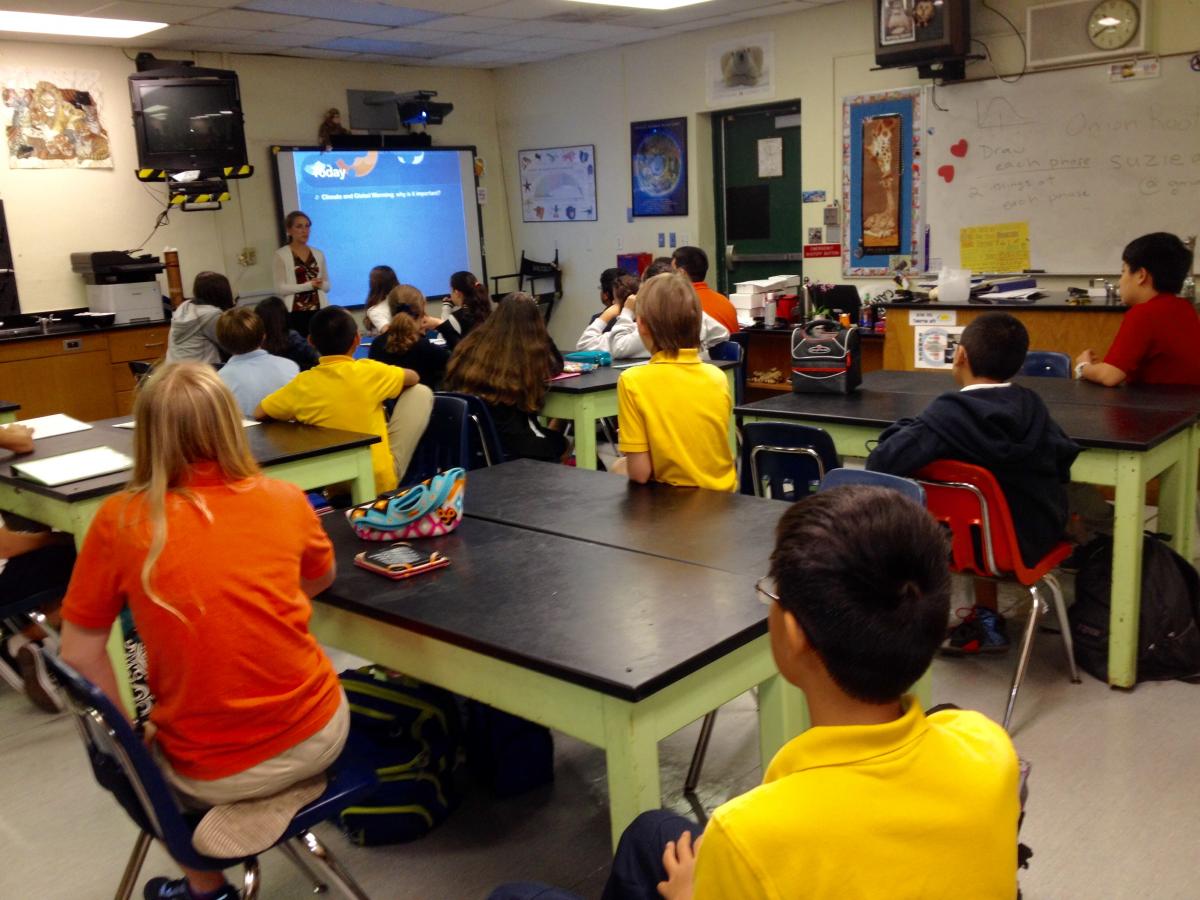On the first day of every school year, I ask my students to draw a scientist. After questioning looks and a round of giggles, the majority of them draw the well-known ‘Einstein’ figure, an older white male with crazy hair and eyeglasses.This figure will inevitably be drawn next to a table of smoking chemicals, and even if it’s just a stick figure, it becomes obvious that his scientific intentions are not necessarily for the good of humankind.
For the next nine months of the school year, I take it upon myself to erase this image from my students’ minds through a year’s worth of hands-on labs, critical thinking activities, and meetings with actual scientists. On the last day of every school year, one of my all-time favorite teaching moments is to watch as my students draw their scientists again. This time they draw themselves, volcano-climbing, rocket-building, scuba-diving with sharks, or maybe even developing new candies in a lab.

I believe that it should be the goal of every science teacher to make the concepts taught in class come alive with real-world applications. Therefore, it was no surprise that after 25 years of seeing the proverbial mad scientist in thousands of sketches, I was drawn to NCSE’s Scientist in the Classroom Program. After years of seeking out local scientists on my own, I could not believe that NCSE’s simple and accessible program could make it so easy for me. Within days of signing up, I was contacted by an NCSE staffer who let me know she was working hard to find a local scientist for my class. Sure enough, I was contacted days later by Eleanor Middlemas, an NSF Graduate Research Fellow in the Department of Meteorology and Physical Oceanography at the Rosenstiel School of Marine and Atmospheric Science of the University of Miami.
Eleanor and I worked out the schedule for her visits and the content of her lessons. She was approachable and tremendously knowledgeable, came well-prepared for two entire school days, and graciously planned three different lessons to meet the needs of my various classes. She dazzled my Honors Physical Science students with her ability to code her own climate models and her love of mathematics. The Honors Biology class received a lesson on paleobiology which included an excellent hands-on activity on the geologic time scale and temperature variations over time. My sixth graders received a simpler lesson which focused on the phenomena of climate change and a simple data model. Ms. Middlemas was surprised by the students’ enthusiastic participation. They asked her so many questions that in some classes, she had to rush to finish her presentation. In the honors classes, she was very happy to find that the students understood how sea and land breezes are formed as well as the concept of specific heat. She was able to work this understanding into the lesson and discuss increasing ocean temperatures.
Ms. Middlemas also, more generally, covered how science works, explaining to students how climate scientists study trends in the data, test their hypotheses, then draw conclusions based on their data collection and computer modeling. She brought along a fish tank for a convection demonstration and an authentic measurement device that scientists routinely send up into the atmosphere using balloons.
Throughout these visits, I watched with satisfaction as the female students in my classroom listened intently to this intelligent, successful scientist. I could almost see the proverbial mad scientist in my students’ minds being replaced by a ‘normal-looking’ young woman. She received the ultimate compliment from my students, who, after her visit, told me “She was cool!” It was clear that this admiration was mutual; Ms. Middlemas enjoyed herself and was impressed with the students’ enthusiasm and scientific knowledge.
In addition to providing my students with a glimpse of how real science actually works, her visits were significant for another valuable reason. I teach at George Washington Carver in Miami-Dade County, a school that is committed to environmental education. After all, we are on the front lines of the climate change battle, just a few hundred feet from the Atlantic Ocean and ground zero for sea level rise.
With the Scientist in the Classroom program, NCSE provided Carver Middle School with a way to enhance our commitment to meaningful environmental education. Students learn best when the content matter extends beyond their textbooks and classroom lessons. What better way to make that happen in a science classroom than collaborating with real scientists? Ms. Middlemas is going to keep in contact with my students and my fellow colleagues at GW Carver throughout the school year, from helping with student projects to more in-class visits. The Scientist in the Classroom program made this meaningful connection to the scientific community easily attainable and convenient for everyone involved!
Bertha Vazquez has been a middle school science teacher for 25 years in Miami-Dade County, Florida. She is also the Director of the Teacher Institute for Evolutionary Science at the Richard Dawkins Foundation for Reason and Science.
